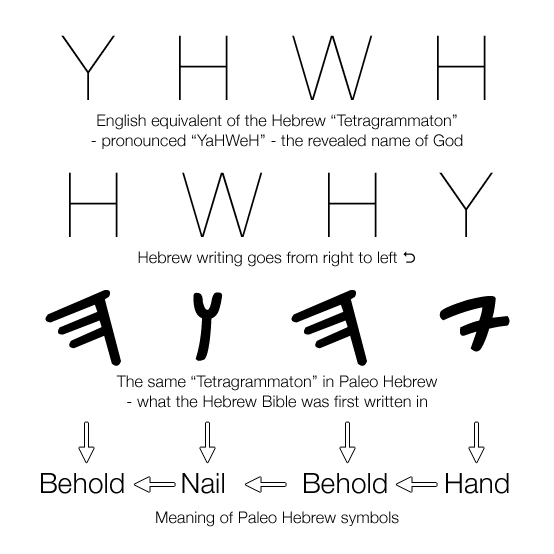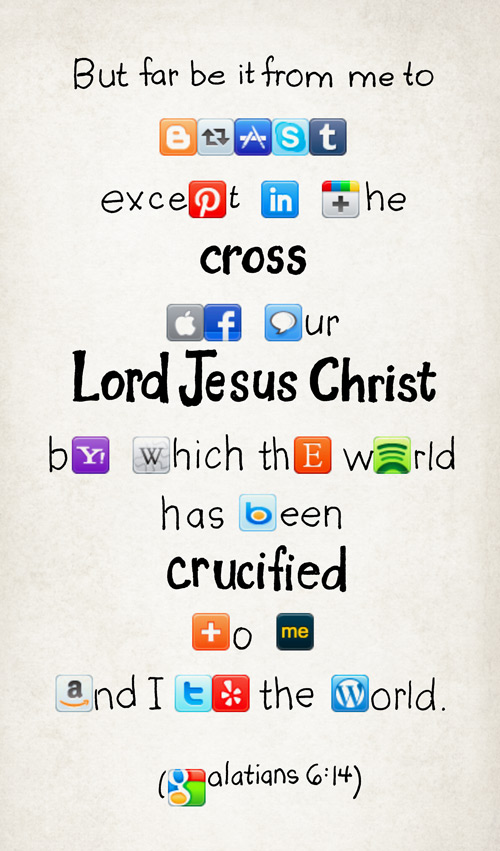The Tetragrammaton, which is the four letter representation of the revealed name of God in Hebrew, was first written in an ancient form of Hebrew now referred to as Paleo Hebrew.
Paleo Hebrew, like other ancient written forms, is pictorial in nature.
This provides a meaning for words which is built up from pictorial symbols, which when combined express both a complete word and a combination of meanings.
The combined word for the Tetragrammaton – YHWH – is often translated into English as
“I Am who I Am” and expresses the eternal presence and identity of God, as well as other deep concepts as to His self-revealing nature.
When taken as individual Paleo Hebrew symbols however you get the following four representations:
Hand (Yodh)
Behold (He)
Nail (Waw)
Behold (He)
What is the significance of this?
When Jesus confronts Thomas after His resurrection He says these words to Him;
“Put your finger here, and see my hands; and put out your hand, and place it in my side. Do not disbelieve, but believe.” John 20:27
What is Thomas’ response in John 20:28?
“Thomas answered him, “My Lord and my God!””
This is an amazing revelation given to Thomas that Jesus is the I Am – YHWH Himself – and the root written form of this, before crucifixion with nails was invented and before Jesus was born, was…
Hand Behold Nail Behold
(Thanks to John Manwell for sharing his discovery of this with me)


